Schoolmaster, Lutjanus apodus
 Schoolmaster, Lutjanus apodus, Juvenile. Fish caught from a tidal pool in coastal waters off Playa del Carmen, Quintana Roo, February 2016. Length: 10.2 cm (4.0 inches). Catch, photograph and identification courtesy of George Brinkman, Guelph, Ontario, Canada.
Schoolmaster, Lutjanus apodus, Juvenile. Fish caught from a tidal pool in coastal waters off Playa del Carmen, Quintana Roo, February 2016. Length: 10.2 cm (4.0 inches). Catch, photograph and identification courtesy of George Brinkman, Guelph, Ontario, Canada.
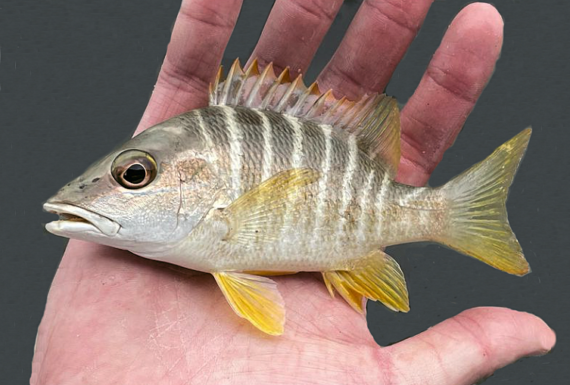 Schoolmaster, Lutjanus apodus, Juvenile. Fish caught from coastal waters off Ft. Lauderdale, Florida, February 2023. Length: 12 cm (4.7 inches). Catch, photograph and identification courtesy of Aidan Perkins, Long Island, New York.
Schoolmaster, Lutjanus apodus, Juvenile. Fish caught from coastal waters off Ft. Lauderdale, Florida, February 2023. Length: 12 cm (4.7 inches). Catch, photograph and identification courtesy of Aidan Perkins, Long Island, New York.
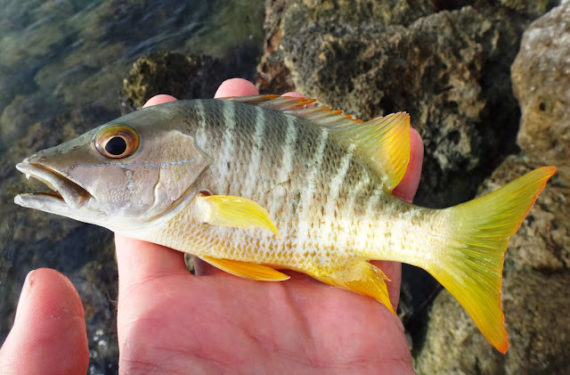 Schoolmaster, Lutjanus apodus. Fish caught from coastal waters off Key Largo, Florida, December 2013. Length: 13.1 cm (5.2 inches). Catch, photograph and identification courtesy of Ben Cantrell, Peoria, Illinois.
Schoolmaster, Lutjanus apodus. Fish caught from coastal waters off Key Largo, Florida, December 2013. Length: 13.1 cm (5.2 inches). Catch, photograph and identification courtesy of Ben Cantrell, Peoria, Illinois.
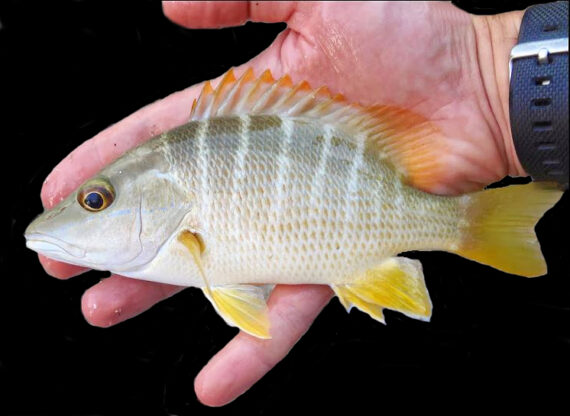 Schoolmaster, Lutjanus apodus. Fish caught from coastal waters off Key Largo, Florida, December 2013. Length: 18 cm (7.1 inches). Catch, photograph, and identification courtesy of Josh Leisen (joshadventures.com), Gaylord, Michigan.
Schoolmaster, Lutjanus apodus. Fish caught from coastal waters off Key Largo, Florida, December 2013. Length: 18 cm (7.1 inches). Catch, photograph, and identification courtesy of Josh Leisen (joshadventures.com), Gaylord, Michigan.
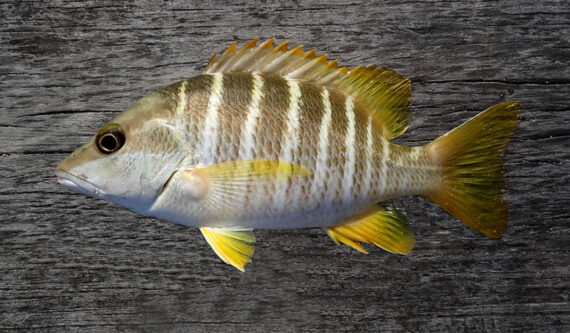 Schoolmaster, Lutjanus apodus. Fish caught from coastal waters off Caye Ambergris, Belize, June 2013. Length: 23 cm (9.1 inches). Catch, photograph and identification courtesy of Eli (obsessiveangling.wordpress.com).
Schoolmaster, Lutjanus apodus. Fish caught from coastal waters off Caye Ambergris, Belize, June 2013. Length: 23 cm (9.1 inches). Catch, photograph and identification courtesy of Eli (obsessiveangling.wordpress.com).
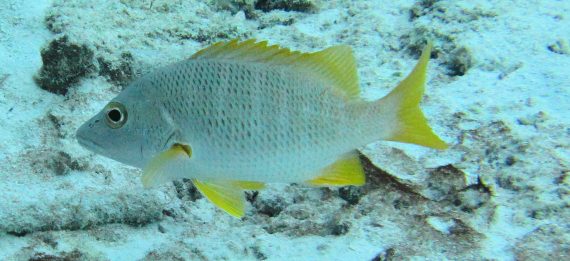
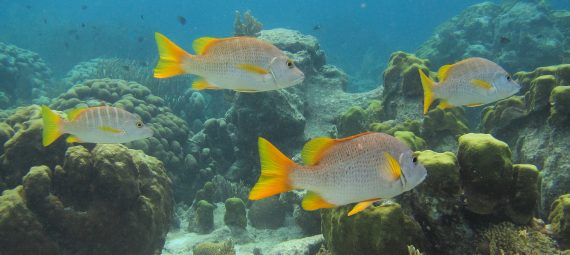 Schoolmaster, Lutjanus apodus. Underwater photographs taken in the coastal waters off Bonaire, December 2019. Photographs, and identification courtesy of Bob Hillis, Ivins, Utah.
Schoolmaster, Lutjanus apodus. Underwater photographs taken in the coastal waters off Bonaire, December 2019. Photographs, and identification courtesy of Bob Hillis, Ivins, Utah.
 Schoolmaster, Lutjanus apodus. Underwater photograph taken with coastal waters off Cozumel Island, Quintana Roo, March 2021. Photograph and identification courtesy of Marina Sutormina, Stockholm, Sweden.
Schoolmaster, Lutjanus apodus. Underwater photograph taken with coastal waters off Cozumel Island, Quintana Roo, March 2021. Photograph and identification courtesy of Marina Sutormina, Stockholm, Sweden.
The Schoolmaster, Lutjanus apodus, is a member of the Snapper or Lutjanidae Family, and known in Mexico a pargo canchix. They received their common name by being a schooling species forming aggregates of several dozen individuals. Globally, there are sixty-seven species in the genus Lutjanus, of which nineteen found in Mexican waters, ten in the Atlantic and nine in the Pacific Ocean.
The Schoolmaster is a colorful subtropical fish with a robust slightly compressed body. They vary in color from olive gray to brownish on their upper back and upper sides transitioning to yellowish-red around their head and are lighter ventrally. Their head has blue stripes. They have yellow fins. They have 8 narrow light vertical bars on their sides which are more prominent in juvenile fish. Their head is large and pointed with a distinctive blue horizontal streak below the eyes which is less prominent with age and quickly fades after collection. One of their upper pairs of canine teeth is larger than their back teeth and is visible when their mouth is closed. Their head has a pointed snout with blue stripes and a large mouth. Their anal fin has 3 spines and 8 rays and is rounded; their caudal fin is large and straight; their dorsal fin is continuous with 10 spines and 14 rays; and their pectoral fins are long. They have 11 to 15 gill rakers on the lower arch. They are covered with scales.
The Schoolmaster is found in shallow waters over coastal coral reefs and close to the bottom at depths up to 60 m (200 feet). They reach a maximum of 61 cm (2 feet 0 inches) in length and 6.0 kg (13 lbs 4 oz) in weight but are normally in the 30 cm (12 inches) to 35 cm (14 inches) range. As of January 1, 2024, the International Game Fish Association world record stood at 6.02 (13 lbs 4 oz) with the fish caught in coastal waters off Key Largo, Florida in September 1999. They are nocturnal predators foraging in seagrass beds on crabs, mollusks, octopus, shrimp, and small fish and they take shelter during daylight. They are gonochorists with both males and females releasing gametes at the same time. The fertilized eggs settle to the bottom and are left unguarded.
The Schoolmaster is a resident of all Mexican waters of the Atlantic Ocean including the Gulf of Mexico and the east coast of the Yucatán Peninsula in the Caribbean.
The Schoolmaster is most likely confused with the juvenile Dog Snapper, Lutjanus jocu (white cone-shaped patch on gill cover).
From a conservation perspective the Schoolmaster is currently considered to be of Least Concern with decreasing but widely distributed populations. They are a popular target of both commercial and recreational anglers utilizing light spinning and bait casting tackle, spear guns and traps. Significantly larger fish are taken in deeper waters. They are heavily regulated in most coastal states in the southeast United States. They are considered an excellent food fish and are sold commercially.